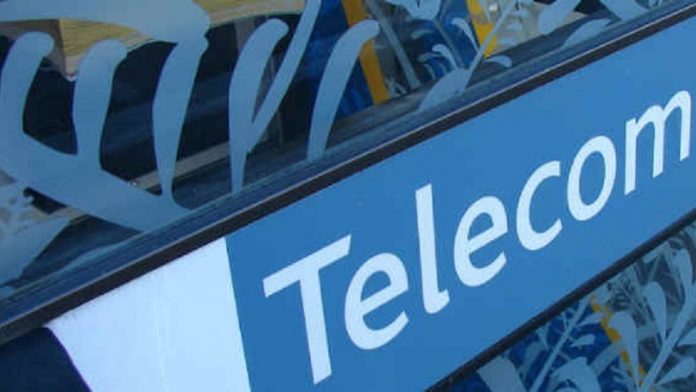This article has been written by Oishika Banerji, an undergraduate student, pursuing B.A.LLB(H) from Amity Law School, Kolkata. This is an exhaustive article dealing with the transformation of the telecom sector in terms of legal and economic analysis.
Table of Contents
Introduction
A growing industry in this world of globalization, privatization and digitalization are that of the telecommunication industry. Like several other industries all across the world, the telecommunication industry is also being subject to growing challenges and fields of opportunities for its increasing transformation in recent days and the years to come. The initiation of these opportunities arises because globally the mobile data traffic has been on a rise along with which the demand for smartphones and data exhaustive appliances. A new ecosystem of digitalization has resulted in the change in the existing framework of this industry. Evolving means of communication through the formation of apps, wireless communication requires a new structure to adjust and fit into. The contribution made by the telecommunication industry towards the economic sector has been immense. There has been a rise of 10% teledensity worldwide as has been reported by the World Bank. Further, there has been a 6% growth in the Gross Domestic Product worldwide.
Such a magnificent industry, therefore, needs to be preserved for the generations to come and for the upliftment of the world as a whole which essentially demands a strong legal framework to fall upon in times of crisis. Various legislation has been made to combat the rising issues related to the sector, one of the notable being the Telecom Regulatory Authority of India Act, 1997 to regulate the working of the sector globally. Age of digitalization has brought in the issue of data privacy and safeguard. Laws have been framed and are constantly evolving to protect the users of the appliances associated with the sector. Transformation in the sector has resulted in the growth of both the legal and economic sector associated with the telecom industry. Each day is a new challenge to cope and function efficiently by avoiding a minimum amount of loopholes.

Telecom Sector
The telecom sector is an amalgamation of companies that looks after communication on a global basis both with and without wire. The widest companies in the sector include that of the telephone companies, the cable operators, the satellite entities and the companies associated with providing the internet. This industry is the hub of deregulation and innovation upliftment. The Industrial Revolution has brought in a huge amount of visible changes in the sector that requires restructuring and framing of policies governing the same. The industry that began around the time of the 17th century with the invention of the telegraph, has now received worldwide recognition. The second largest industry with light to India and the largest in China is an industry with a base of 1.2 billion in India. The growth of the sector based in India is for the reasonable tariff charged, availability, expansion of the coverage of 3G and 4G mobile data services and a favourable environment for its growth. Thus the telecom sector with light to India as well as the globe is a major development brought about on socio-economic grounds. Telephonic communication and evolving mobile subscriber are the key factors contributing to the growth of this sector. A monopoly regime by origin, the telecommunication sector went through a revolution with the bringing about of the independent regulatory mechanism.
Age of Digitalization
Digitalization is the reason for the transformation brought about in the telecom industry. For this sector currently, the establishment of in-house digital competence stands necessary to meet with the demand towards the sector. With digitalization entering the industry, the focus has shifted from network building to the adoption of technologically influenced mechanisms to bring in a change in the existing sector. For the operators, the task of implementing this transformation has not been a hard one but for the service providers, this is still a complex and detailed process. With a gradual decline in the amount of revenue received from the traditional service providers, the adoption of this newly developed method is the only option left for the telecom sector to grab and apply. Other than just calls, music and video, the telecom sector is also bringing in e-health apps, security means of cars that are connected with the mobiles, economic transactions like Google Pay Paytm is rising every day. Some of the telecom industries that are widely known as AT&T and Ooredoo are said to be very well adjusting to the new courses of the telecom sector. The aim of digitalization will be to provide services beyond the basic requirement of the consumers for this sector experiences high amount of competition with the players already existing in the market and have been successful in creating a healthy relationship with its customers. What the digitalization age focuses on is to bring in the usage of 5G data services. The fact that in order to adapt to this sector, one has to go through a long way cannot be ignored.
While the world keeps on shifting into having a data-centric future, the motive to become customer-centric is also developing. A large number of disorder technologies in form of 4G, new messaging services like that of Whatsapp, Instagram, WeChat along with services associated with online streaming like that of Netflix, Amazon Prime, Hotstar which streams a large amount of data are also adding to change in the behaviour pattern of the customers. While these companies have brought in consumer demand the service providers of these companies, that is the telecom sector, is facing large competition on several grounds. There has been a growth in the revenue of the sector by means of the consumption of video in mobile devices. The 2020 strategic agenda brought about by the sector is cost control models, upliftment of customer experiences and creation of business models digitally.
A legal view
In India, the telecom sector is governed by several legislations. First comes the Indian Telegraph Act, 1885 that helps in the regulation of telegraphs across the nation. This statute became the basis for the union government to issue various licenses concerning universal access to the internet both within domestic and international limits followed by network operators working virtually. While the wireless Telegraph was governed by the regulation of Indian Wireless Telegraph Act, 1993, the cable television was regulated by the legislation which came to be known as the Cable Television Networks (Regulation) Act, 1995. With the setting up of the Telecom Regulatory Authority of India (TRAI), revolutionary changes brought in the telecom sector. The regulatory authority provides scope for improvement for the globally emerging sector. With a clear aim towards promoting transparency and fairness, the Telecom Authority of India introduced a consumer-centric welfare move in the month of January 2016 to compensate all consumers for any call drops which will be limited till the extent of three in a day. With the increase in broadband invasion in the sector, the latest development brought by the telecom authority is WANI or the Wi-Fi Access Network Interface which will enable Wifi services whenever necessary. The TRAI Amendment Act, 2000 specified the function associated with the authority governing regulation by dividing the existing body into two parts namely:
- The Telecom Regulatory Authority of India;
- The Telecom Dispute Settlement and Appellate Tribunal.
Conflict of TRAI with DOT
The confrontation of TRAI with that of the Department of Telecommunication ( DOT) has been a long drawn legal battle in the telecom sector. In the famous case, M/s Bharti Cellular LTD And Another v. Union of India(2010), where DOT was alleged to take a decision regarding network operations and data services without the prior permission and recommendation from that of TRAI which was further added by the revocation of license on the part of DOT without TRAI’s involvement in the same. The decision taken was that although there was an existence of an independent body governing the telecommunication sector in India, it was necessary for both the government and DOT to take the approval of TRAI before processing with any decision related to the sector as a whole. Thus the ambit of TRAI ‘s authority was decided in this case along with which TRAI was provided with a quasi-judicial authority.
Data Security And Privacy Concerns
TRAI’s framing of policies comes along with several jurisdictional restrictions. A major issue associated with the telecom sector globally is that of data protection and security which is essential to safeguard the growth of a luxurious problem called privacy. Privacy infringement is often viewed whenever there is a talk about the telecom sector. With a global rise in the use of network devices, comes along the problem of protection of a huge number of data transfer and private texts through these devices. The Information Technology Act, 2000 raises questions pertaining to data protection and privacy issues. Some of which is whether the consent of the individual should be taken before there comes the need for sharing his or her personalised data? Which legislation will govern the Data Controller that is coming into play? What will be the role of the data controller and how much liability should be existing on their part? These questions as a whole can be answered by three main objectives that should be adopted by the sector which are being accountable, having security provision and having autonomy over the issues arising.
Role of Intellectual Property Rights
As the telecom sector is a growing industry, the requirement of Intellectual Property Rights comes to play as well. This is necessary to safeguard innovations taking place in the sector along with being a profit wheel for the companies associated with the sector. In the well-known case of Ericsson v. Micromax (2016), the plaintiff, a well-known equipment company in the telecommunication network had filed a suit for infringement of patent and the court ruled on the basis of two new terms in the domain of Intellectual Property Laws that are FRAND and RAND. While the former consists of the term fair and reasonable, the later symbolises reasonable and nondiscriminatory. Cases related to Intellectual Property in telecom sector does not end here instead there are a number of cases that evolved with the issues of patents owned by companies. In every case, the court concluded that any company working in this sector will adhere to reasonableness and fairness.
An economic view
With an aim to introduce and implement 5G services worldwide, the telecom sector was estimated to contribute 8.2% of the nation’s Gross Domestic Product (GDP) by the end of this year of 2020. The 5G domestic plan by the Indian government is to make the domestic companies reach out to international platforms and the global market. Digital payment systems, economic folk grounds are taking place in the country and beyond. Collaboration with international companies has opened the scope for the country’s telecom sector to reach out to masses in all corners of the world. The 5G plan can reach out to inter-connected smart appliances on a huge scale that would help in unlocking the developmental impact upon Machine to Machine (M2M) and several other technologies that aim to bring about services-oriented with citizens welfare. There was a recommendation of a sale of 8,644 units of frequencies across eight well-known brands by the telecom regulator. The expansion of 4G coverage across the nation has increased the growth of sale in mobile devices exponentially. Thus huge chunks of money flow in through this sector to the country’s economy. Further, the Government of India has introduced platforms like Bharat Net and Digital India for the upliftment of the telecom sector economically. The entrance of the player called Reliance Jio has also brought in a lot of transformation associated with the sector. Although this player brought in a lot of developments and is an economic booster, the sector also suffered a loss due to the huge amount of debt remaining unpaid.
The telecom sector always experiences high amounts of competitions among players in the sector. Along with this, there are also times when the companies under the sector merge to bring about economic growth and provide for financial support to each other. The existence of the telecom sector is itself a huge contribution to the economy globally.
Conclusion
There is always an expectation that revenues associated with this industry will always be on a rise due to the dependency it receives from customers all around the world. With the world adjusting to winds of modernization, the telecom sector is also undergoing transformation each day. This sector has indeed a bright future in days to come. What the sector requires is proper laws governing it and proper working and functioning of the companies associated with it. That’s all for this sector to bloom more.
References
- https://www.hitachivantara.com/en-us/pdfd/white-paper/digital-transformation-of-telecom-industry-liquid-hub-whitepaper.pdf
- https://medium.com/@jackmathew/technology-trends-transforming-the-telecom-sector-fe60519e9618
- https://carrier.huawei.com/en/hottechnology/agile-digital-operations/full-story-on-telco-digital-transformation
- https://www.ericsson.com/en/blog/2018/2/digital-transformation-in-the-telecom-industry
- https://www.ey.com/en_in/tmt/digital-transformation-for-2020-and-beyond-eight-telco-considera
- http://www.legalservicesindia.com/article/1670/Telecommunication-laws-in-India-and-its-drawbacks.html
- https://www.dlapiperintelligence.com/telecoms/index.html?t=laws&c=IN
- https://www.acc.com/sites/default/files/resources/20190314/1494557_1.pdf
- https://www.lawctopus.com/academike/competition-law-telecom-sector/
- https://economictimes.indiatimes.com/industry/telecom/telecom-news/telecom-industry-may-contribute-8-2-to-gdp-by-2020-by-leveraging-5g/articleshow/70071849.cms?from=mdr
- http://ftp.zew.de/pub/zew-docs/dp/dp16056.pdf
- https://economictimes.indiatimes.com/news/company/corporate-trends/economic-survey-2017-18-telecom-going-through-stress-has-hurt-investors-lenders-vendors/articleshow/62693873.cms
- https://www.investindia.gov.in/sector/telecom
- http://oaji.net/articles/2017/1707-1488614545.pdf
- https://www.investindia.gov.in/sector/telecom
LawSikho has created a telegram group for exchanging legal knowledge, referrals and various opportunities. You can click on this link and join:
 Serato DJ Crack 2025Serato DJ PRO Crack
Serato DJ Crack 2025Serato DJ PRO Crack










 Allow notifications
Allow notifications



